Have you ever looked at a restaurant menu or recipe wondered about certain food names? I mean, we all know what they mean (mostly) – but how did that particular name come to be? Eggs Benedict, Butter Chicken, a Cobb Salad, etc. Some names seem perfectly reasonable and somewhat descriptive, but other names don’t completely align with what the dish includes. And some of the etymology of these food names will surprise you!
Food names, they’re everywhere. You know what food is when you see one of them on the menu or in a cookbook, but how did that particular dish get its name?
There are many different ways for food to receive their names. Some names seem perfectly reasonable and rather descriptive (Red Velvet Cake), while others don’t seem to be completely aligned with what the dish includes (such as Eggs Benedict).
Food names have become so unique and prevalent, that people have started naming their children after food. It makes sense since food is such an integral part of our lives and is often an inspiration for wonderful bouts of creativity. Just take a look at some of these food quotes and you’ll see how much food means in our lives.
The Unusual History of Food Names
I can’t be alone in sometimes wondering how that name came to be. For example, I was recently whipping up a batch of Butter Chicken and it occurred to me that there really isn’t any butter in the recipe.
In this blog post, we will discuss 44 random food names that have been explained by various sources, from historical roots to culinary inspiration.
French Fries
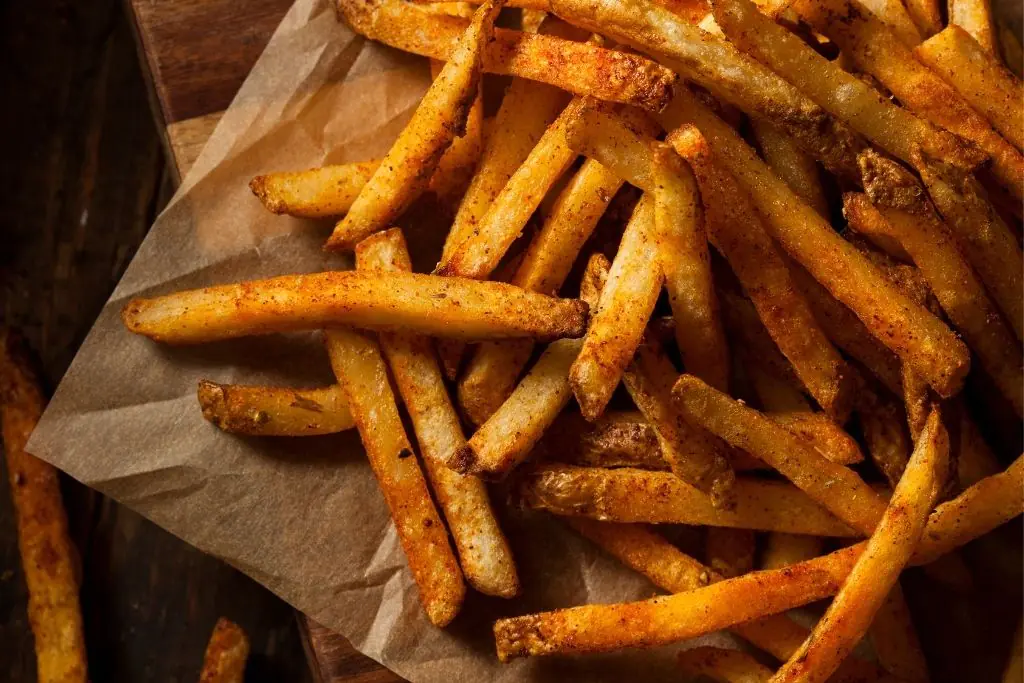
Despite what you may think, French Fries aren’t actually from France. One of the oldest and most common food names, French fries were invented by Belgium’s poor people, many of them fishermen.
They used to cut potatoes up and fry them in order to make use of their vegetables before they went bad or rotted away. This was especially the case during the winter when fish was hard to come by.
The dish was first introduced to American soldiers during World War I by way of French-speaking Belgians, which is why they were called “French Fries.” The name has stuck ever since.
Butter Chicken

A staple dish of Indian food, Butter Chicken is one that many people who eat here often fall in love with instantly!
If you didn’t know better, you would probably think this dish was practically sauteed in butter alone. However, this Indian dish has very is made from tomatoes and spices simmered together for hours until everything melds into one delicious dish! Some Butter Chicken recipes don’t even call for any butter at all.
Usually made by cooking pieces of chicken along with a special sauce made from tomato puree and other ingredients like cream (or yogurt), it’s not only delicious but incredibly popular too – which might be why this particular name stuck over time!
Some people think the term ‘butter’ was used because curry dishes are sometimes referred to as being “rich”, while others believe that this word came about due to how much butter is usually needed just for making this specific recipe. Still… no one knows exactly where it got its name though so for now, it’s just speculation by food historians!
What we do know is that the English name comes from the Hindi phrase Murgh Makhani, which can be translated to Chicken Butter. Various anecdotes tell of a man who created the butter chicken sauce in order to help spread a small amount of leftover tandoori chicken across a large group of unexpected guests.
It is quite possibly one of the most popular dishes across all cultures, but there are many variations of the dish. Some spicier, some sweeter, some with butter, and some without… so you never quite know what to expect.
Grits
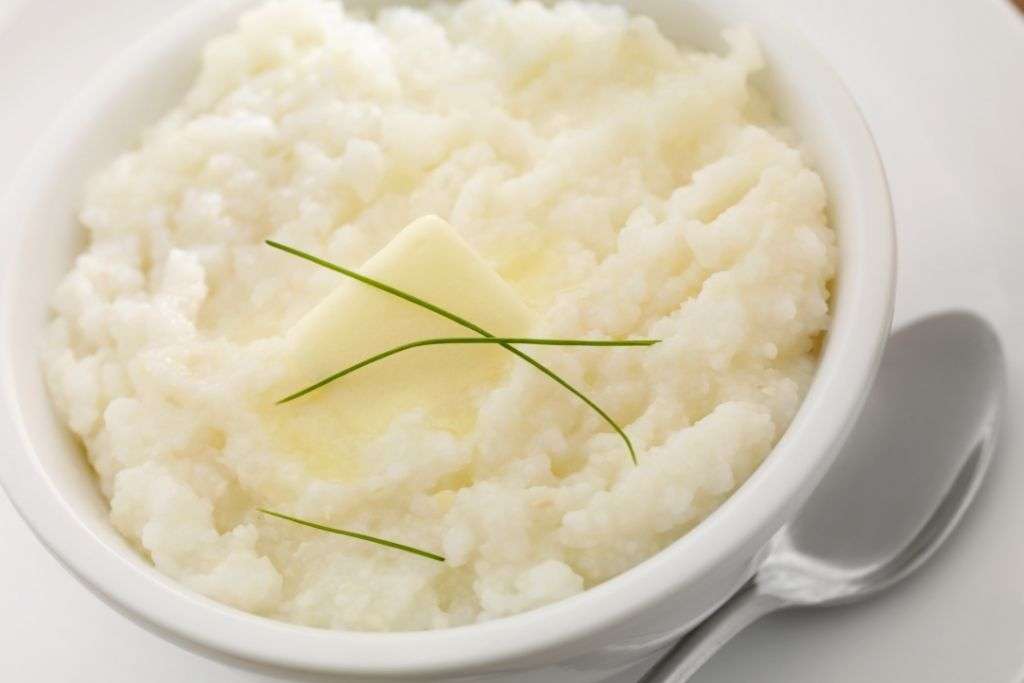
Grits are a traditional Southern breakfast food that is made from coarsely ground corn and then boiled. They can be eaten as-is or mixed with cheese, butter, milk, and other ingredients to make them even yummier!
The word ‘grit’, however, doesn’t originally mean anything related to coarse grain like sand or bits of stone. It comes from the Old English grytte (meaning bran). The reason behind this name isn’t clear though – there are so many theories about how grits got their name… such as: because they were once considered poor man’s fare because they grow in dirt/on the ground by virtue of being a crop similar to maize – which sounds more believable than any of the others.
The most popular theory is that grits were originally made by Native Americans who ground up corn kernels to make a porridge. Early settlers imitated this process and re-named them “grits.”
Chicken Fried Steak
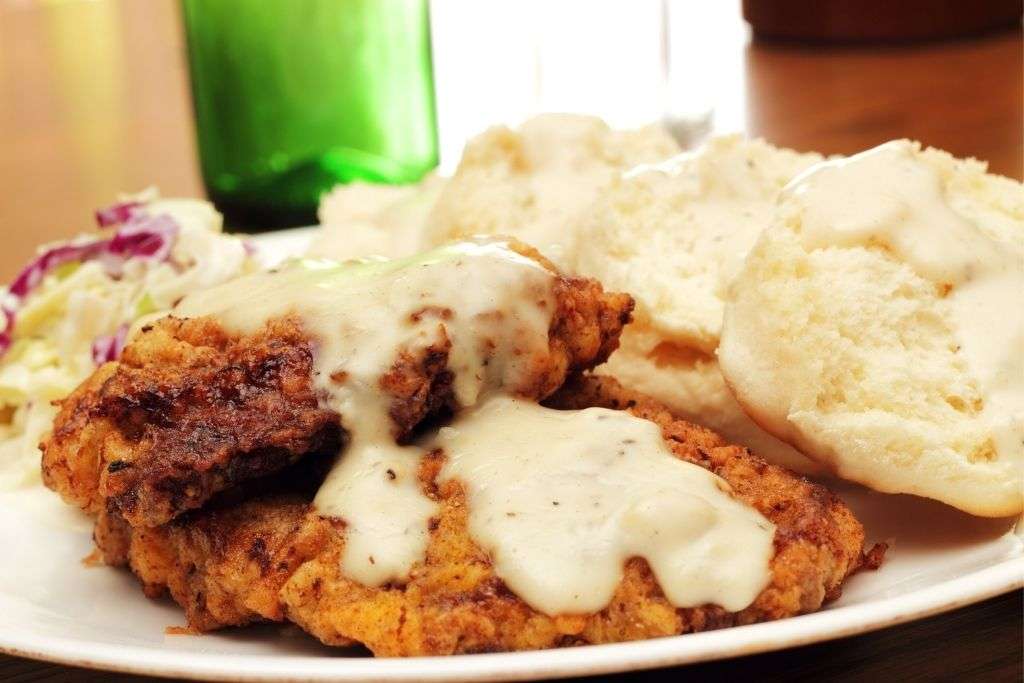
Another American dish that is often served as a breakfast meal, Chicken Fried Steak was made popular in Texas and can be prepared with many different kinds of meat – beef being the most common. This simple ground beef steak is pan-fried after first being dipped into a mixture of egg and milk before finally getting drenched in seasoned flour. It’s then fried until it becomes nice and crispy on the outside!
The name may have been influenced by Southern cooks who wanted to rechristen their ‘egg foo young’ – which sounds too much like an Asian food item for comfort! Thus, they substituted chicken instead just because it sounded less foreign or distinct from other people who were eating at home back then.
Cobb Salad
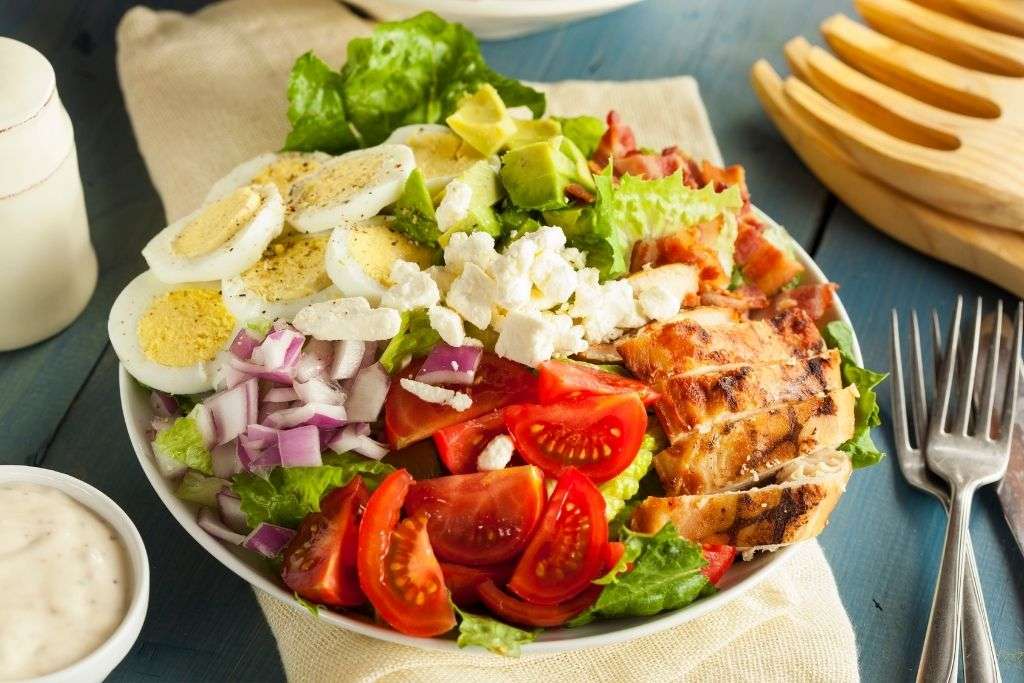
First made in 1937 by Hollywood’s Brown Derby restaurant, Cobb salad is a simple dish consisting of chopped lettuce (iceberg), tomatoes, bacon bits, boiled eggs, and chicken all tossed together with a creamy blue cheese dressing! The name may have been derived from Robert Howard “Bob” Cobb who was the owner of the famous eatery before selling it to Warner LeRoy.
There are other theories that say Bob took inspiration for this recipe from his mother-in-law Helen Sennet… but no one knows for sure how he came up with such an unusual combination of food items.
Eggs Benedict

Eggs Benedict is one of the most popular breakfast items in American restaurants today. It consists of poached eggs on toasted English muffins that are topped with hollandaise sauce – which is a mixture made from butter, egg yolks, and lemon juice!
The name really does make perfect sense because the key ingredients (the eggs) were named after their inventor – British aristocrat Sir Benjamin Thompson who was known as Count von Rumford. He also helped develop “Drummond Light” or what we now know as ‘flash photography’.
As for how the dish got its name? No one knows definitively but there are various theories suggesting it could have been named by an employee New York’s Waldorf Hotel, or perhaps the head chef at Delmonico’s restaurant in New York.
The story that most people recite is that of Charles Ranhofer, who invented this particular plate of deliciousness way back in the 1860s when one of his regular diners – Mrs. LeGrand Benedict – complained that she had grown tired of the menu and wanted something new.
However I, personally, like the one about it having been created as a hangover cure for one of the Waldorf’s regular guests.
However Eggs Benedict got its name, I’m glad that it came to be as it is one of my favorite breakfast foods!
Chicken Tikka Masala

This popular dish from South Asia is traditionally made by marinating chicken pieces in spices, yogurt, and fresh lemon juice before finally cooking it on a tandoori grill to achieve that crispy texture! It has since been adapted into many other variations such as butter chicken…. but Chicken Tikka Masala remains one of its most popular forms.
The name ‘masala’ actually means a mixture of spices – which fits perfectly with this dish because there are so many different ingredients all mixed together in order to give you an explosion of flavors when you take your first bite! However, no one really knows how this curry-like Indian dish got its name.
Mole Poblano
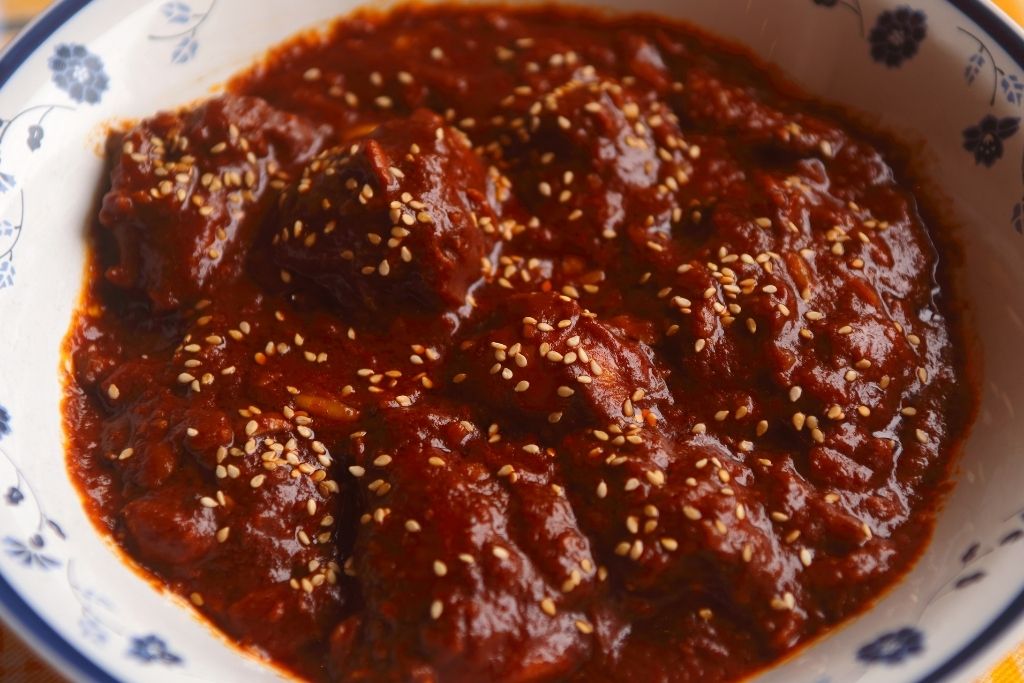
This traditional Mexican dish is made by roasting and grinding up such ingredients as chilies (ancho, pasilla, and mulato), spices, fruit juices like orange juice… even nuts! It’s then mixed with water or broth to create a thick sauce that can be used for whatever meat you want – chicken being the most common choice.
The term ‘mole’ actually comes from the Pre-Columbian Aztec word meaning “sauce” – which makes sense because it was originally created by cooks in Mexico just before Spanish conquerors arrived there. The current name probably evolved back when Spaniards tried this spicy new food item but they didn’t know what to call it – so they just called it ‘mole’ because that sounded like something you’d find in a Mexican kitchen!
Red Velvet Cake
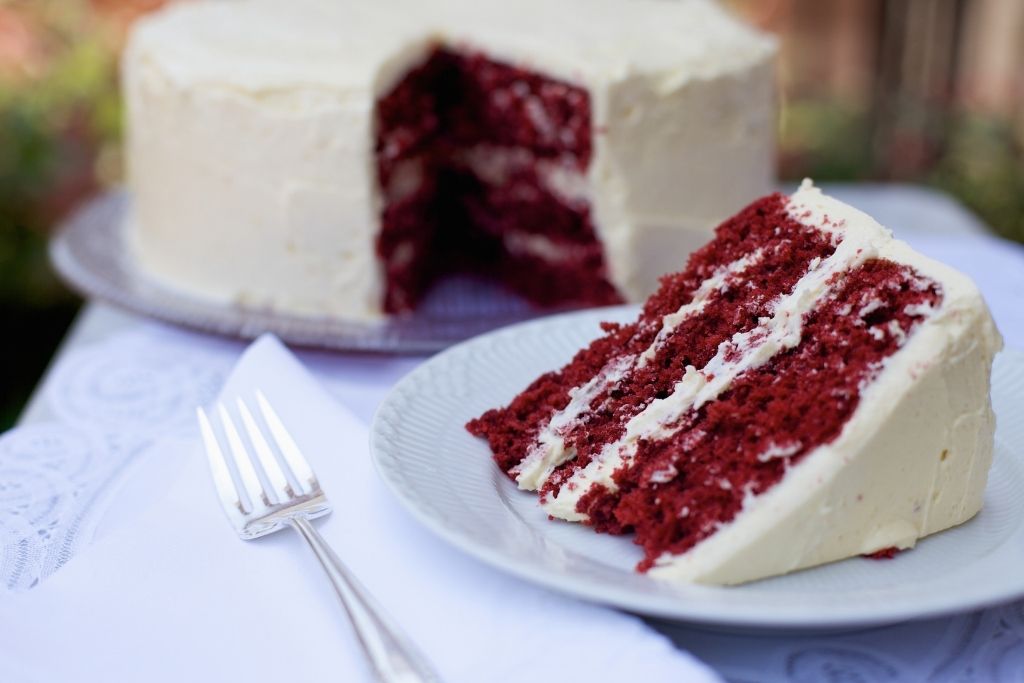
This rich and moist chocolate cake is considered one of the most popular cakes consumed today – especially during Valentine’s Day. It also makes for a luxurious birthday cake or cupcake! It consists of cocoa powder, red food coloring, and buttermilk all mixed together with white sugar before baking inside an oven to create this delectable dessert… yum!
The name was actually created by someone who wanted to market their own version back when such foods were much less common than they are now – hence why it sounds unusual or surprising even though we know what’s really included in its ingredients!
It may have been named after velvet napkins that were popular at the time because red was considered a very luxurious color to wear, or it could have been called such due to how velvety this cake felt in your mouth when you took one bite.
One of the most popular types of cake in America today (and quite possibly around the world too), Red Velvet Cake is one that only became even more beloved once movie stars started using this particular type to serve up on screen back in the 1930s.
Although some people believe its name came from how much red food dye goes into making these cakes… others say instead that “velvet” refers to their texture and not necessarily what color they are.
Hamburger

The initiated may think that a Hamburger is made from pork, but it’s not.
One of the most popular American foods is made by combining ground beef, salt, and spices with a variety of other ingredients such as egg or breadcrumbs to achieve a certain consistency. It’s then cooked (on the BBQ whenever possible) placed on a bun and finished with a variety of toppings, such as pickles, sauce, lettuce, onions… maybe even cheese!
The name ‘hamburger’ actually came from the city in Germany known for its meat market – hence why it likely got combined with another German word – ‘beef.’
However, no one knows how this food item really became named that way because there are several different theories about that. Some believe it was named after someone who worked at the Hamburg-America shipping line back when they started using these beef patties on long voyages.
Others think it’s because German immigrants in the USA began selling this food item – which they referred to as “Hamburg-style American fillet” from their stalls.
Waldorf Salad
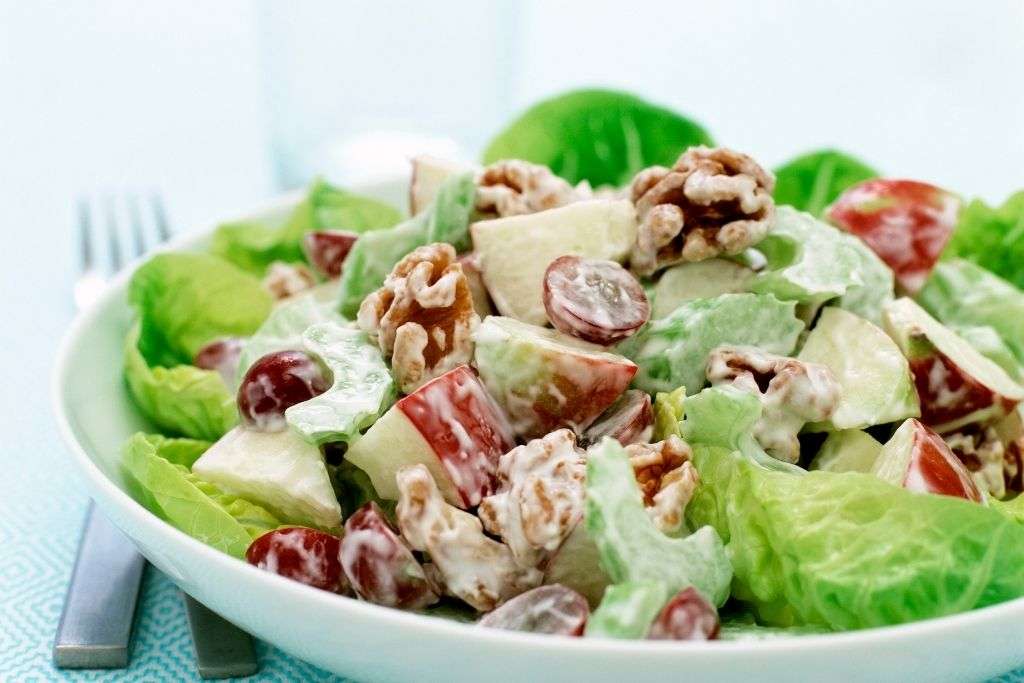
This salad was created by a chef at New York’s Waldorf-Astoria hotel sometime between 1896 and 1908 – just before that famous hotel opened its doors! It consists of apples, celery… even grapes all mixed together with mayonnaise along with some walnuts or pecans (sometimes even bacon!) The name comes from another popular guest at the time who particularly enjoyed eating an apple every day so he could “keep his doctor away” according to the menu.
Ranch Dressing

I know you’ve probably heard of this tasty condiment more than once before – especially if you’re someone who really loves eating salads or crackers for snack time! This creamy dressing is made from such ingredients as buttermilk and mayonnaise mixed together with garlic salt along with some onion powder, parsley, or chives (or even dill).
However, there are two different versions of how this dressing got its name. Some people believe it was because the first person who bought it wanted to keep her ranch’s name associated with all their grocery items – hence why they branded this particular one as ‘Ranch.’ However others think that someone called his own version of this food item Ranch Dressing after he had a huge success selling his bottled dressings… so large in fact that everyone else began copying him and calling their own bottles by the same thing too!
Buffalo Wings
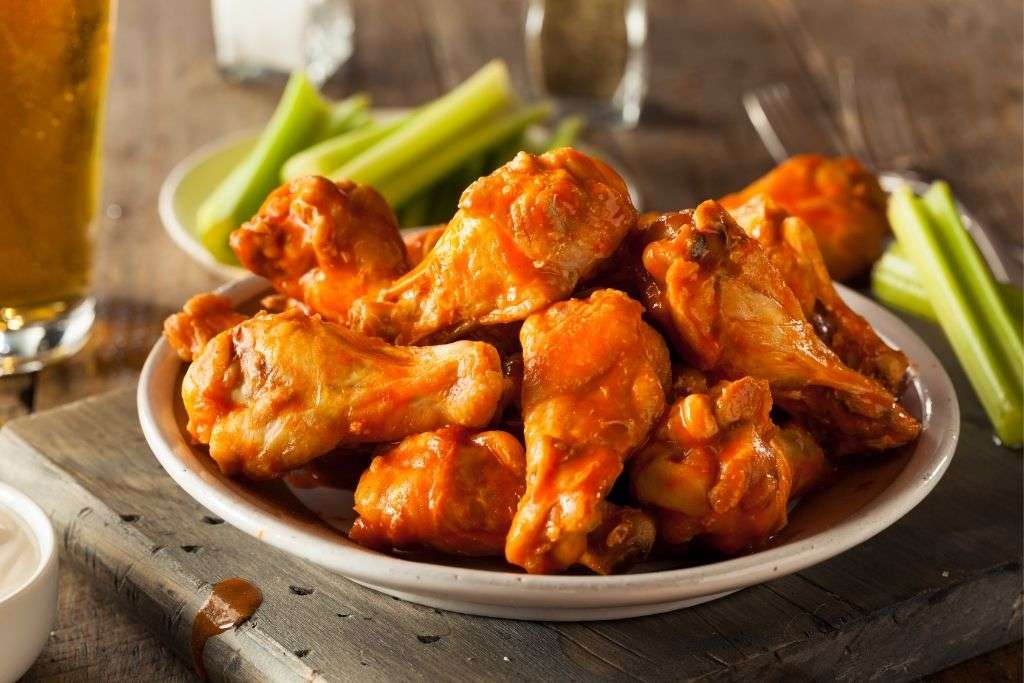
One of the most popular appetizers (or snacks) that you can find at any sports bar or pub is made from deep-fried chicken wings, not the imaginary wings from buffalos.
Another accidental food item, the story goes that this staple of American cuisine was created when a restaurant in Buffalo, New York received a large shipment of just chicken wings by mistake. Not wanting the food to go to waste, the owner came up with a unique way to cook and coat the wings to create this tasty finger food.
Pancakes

I always assumed that this delicious breakfast food got its name because they were like mini cakes cooked in a pan. Makes sense, right? Wrong!
People have been making pancakes for centuries, but how did this tasty breakfast dish actually get its name? Some people believe it got called as such because early American settlers used to make them on flat stones heated up over an open fire (much like today).
But what we do know is that these fluffy treats got their name from the Old English word ‘Panca’ which meant five – as in how many ingredients you would need to make them.
Biscuits
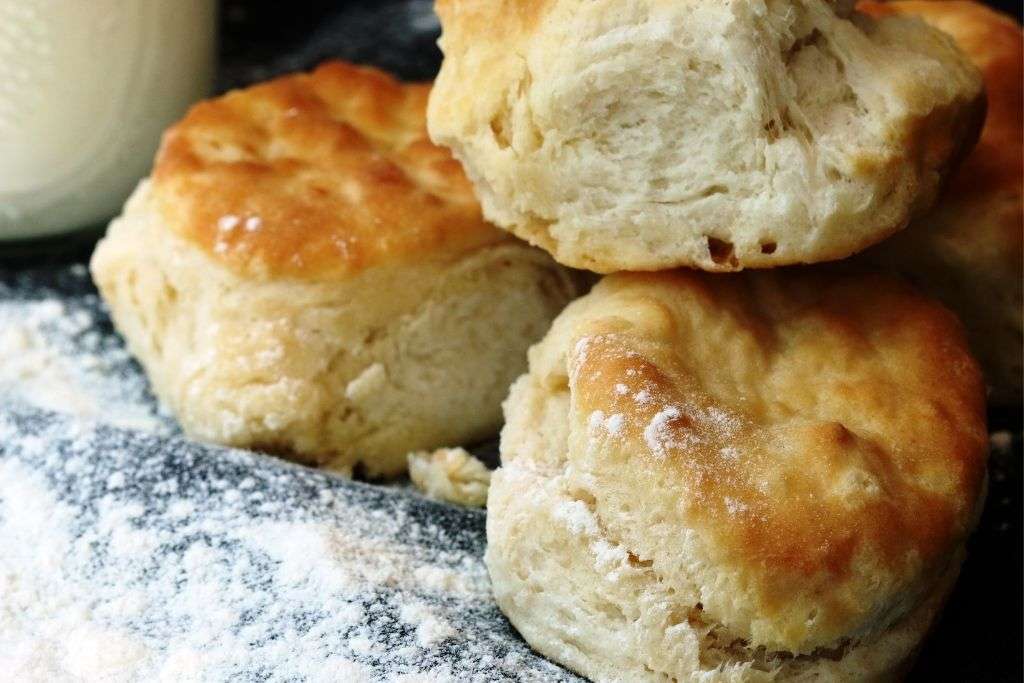
In case you hadn’t noticed, it’s often traditional for Americans to serve food with either bread or some type of baked treat on the side.
One particular favorite, especially when there is gravy involved, is called “biscuits” and they’re made using flour along with baking powder plus fats like butter, shortening, or lard.
However, where exactly did this delicious term come from? Well… lots of people think that early American settlers used these biscuits to describe what we now know as scones back then – especially since they were also mostly formed into round shapes too!
Others believe that the word got coined by French bakers who used to call them ‘biscuits’ because it came from the Latin words ‘bis’ (meaning twice) and ‘coquere’ (which meant “to cook”).
Bananas Foster
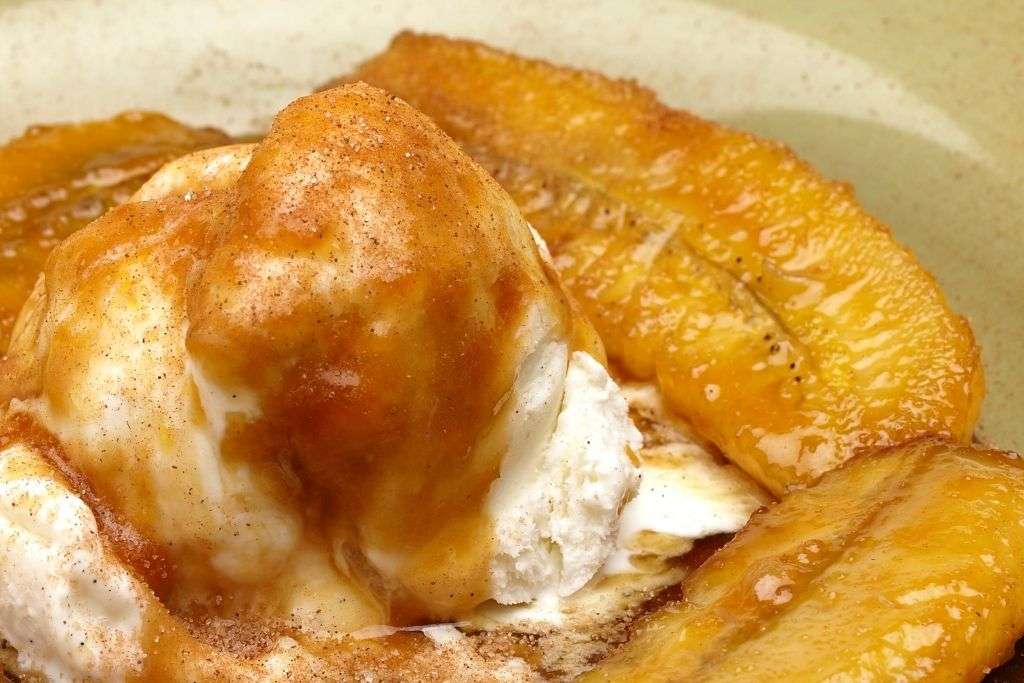
Although this delicious dessert may look like a modern creation at first, it’s actually been around for much longer than you would have guessed.
First created back in the late 1950s by a man named Paul Blange who worked as head chef at New Orleans’ famed Brennan Family restaurant – Bananas Foster was one of the most popular dishes that he used to serve up there!
What exactly is it? Well… It begins with bananas flambéed (yes… set on fire!) along with butter and brown sugar before being served over vanilla ice cream. This fun food dish also got its name from another well-known character who regularly dined there – ‘Foster’ which was Richard Foster, an American politician.
Gumbo

A well-known staple of Creole food, gumbo is a delicious stew made with lots of different types of meat or seafood, and vegetables.
It can range from being very thick to relatively thin (especially if you use chicken stock instead) but one thing that isn’t up for debate is how this dish got its name! The word ‘Gumbo’ comes directly from the African Bantu language spoken by many slaves who were brought over to Louisiana back in the 17th century. This term actually translates as “okra” which was often included in stews like this one even before they were introduced into the cooking culture here too.
Sushi Rolls

You might not think it at first glance… but sushi rolls are actually a very modern form of food.
Even though it’s true that the ancient practice of fermenting fish and rice together has been around for centuries in Japan, we can thank Americans (and Canadians) for its introduction to many other countries over here too!
The word ‘sushi’ comes from an ancient Buddhist term which meant “it is sour” while “maki means ‘to coil'” – but how did this dish get called sushi rolls then? Well… believe it or not, when these tasty treats were introduced into North America back in the 1970s they often got served with seaweed on the outside rather than inside like today. So, because you would eat them by unrolling them like a piece of paper – people naturally started referring to them as “sushi rolls” instead.
California Rolls
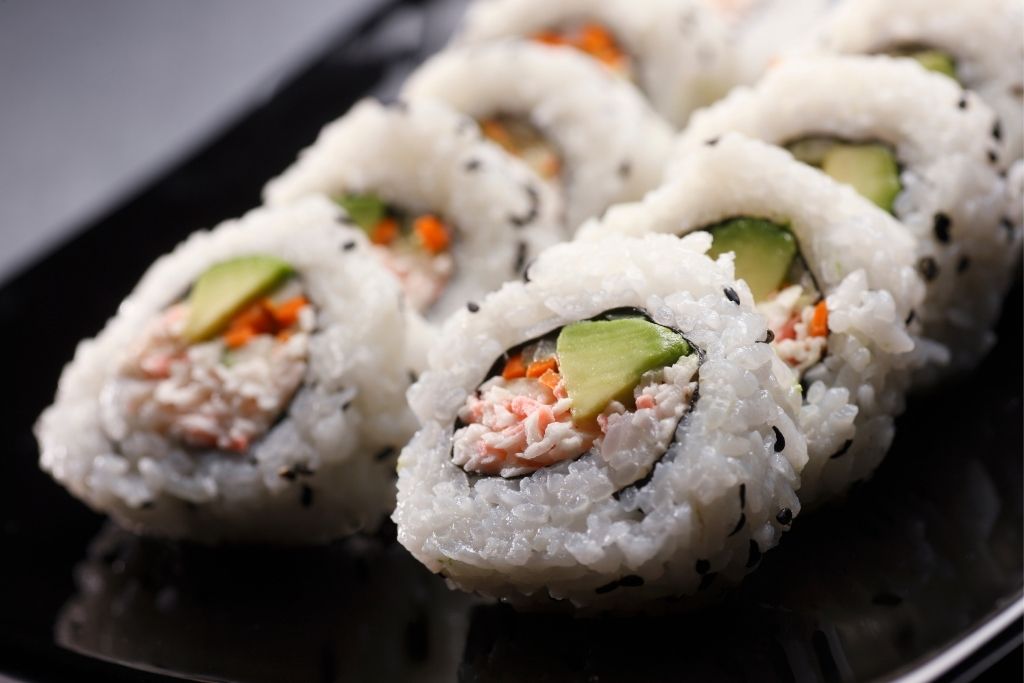
Sticking in that particular vein for a moment, many people don’t realize that California Rolls have nothing to do with California, and were actually invented in Canada.
Specifically, they were created by a man called Ichiro Mashita back in the 1970s who was working as head chef at Vancouver’s popular Japanese restaurant ‘Hockey Sushi.’
However… this dish didn’t exactly get its name because of where it got invented (even though that is certainly interesting too), but rather due to what ingredients are included.
While there isn’t really anything Californian about them other than avocado and crabmeat – the name also had a lot to do with the original diners who loved the dish.
“When I came to Vancouver, most Western people did not eat raw fish,” Tojo once said, when explaining the origin of The California Roll to The Globe and Mail. “Another thing Western people did not eat was seaweed, so I tried to hide it. I made the roll inside out. People loved it. A lot of people from out of town came to my restaurant—lots from Los Angeles—and they loved it. That’s how it got called the California roll.”
Hawaiian Pizza

Speaking of Canadian inventions – how, exactly, did something as unusual as pineapple end up on a pizza? And was it really just the pineapple portion that earned this dish its name?
This one might be a little more obvious than some of the others on this list, but it still has an interesting origin story.
Created by Sam Panopoulos who decided to add pineapple to the pizza he served at the Satellite Restaurant in Chatham back in 1962. I’m not sure we’ll ever know why he decided to experiment by adding pineapple chunks onto what was otherwise just another pepperoni pizza. (And, yes, the original Hawaiin was pepperoni and pineapple, not the ham and pineapple combination we now know and – maybe – love.)
Even though many of his customers seemed to love this new creation, which is why it got added to the menu almost immediately – not everyone thought so!
In fact, when it got featured on CBC’s ‘Luncheon Date’ show that same year many viewers wrote in with the now-famous complaint that “pineapple doesn’t belong on pizza!”
Of course, these days you can get Hawaiian Pizza all over the place – but it still remains the most popular in the province of Ontario, which is where it first got its name.
Danish Pastries

These delicious sweet treats were actually created by an Austrian baker named August Zang back in 1839 – who ran a bakery (located at Konditorei on Graben) out of his home located here in Vienna.
However… after he had perfected his recipe for what we now know as ‘Aebleskiver’ (a dutch name that literally means “apple slices”) he then decided to go into business with Georg Christian Karl Lüchow who owned another nearby bakery called Bäckerei-Café Procope . Since this was long before the concept of franchising had been invented, this meant that the recipe was then sold to him too.
Croissants

Another pastry which is more popular in North America than many other places around the world – croissants were actually created by a man named August Zang back in 1839 as well!
In fact… these buttery delights got their name from another bakery called Boulangerie Viennoise located here in Vienna (specifically on “Kohlmarkt” and it’s still open and baking today!) where they originally started getting baked with Austrian crescent-shaped dough rather than just plain triangles like we tend to see them made out of now days.
These days you can get all kinds of desserts and pastries around the world that have been inspired by these originals, but if you ever get a chance to visit Vienna then it’s definitely worth stopping by for some authentic Viennese treats!
Raindrop Cake
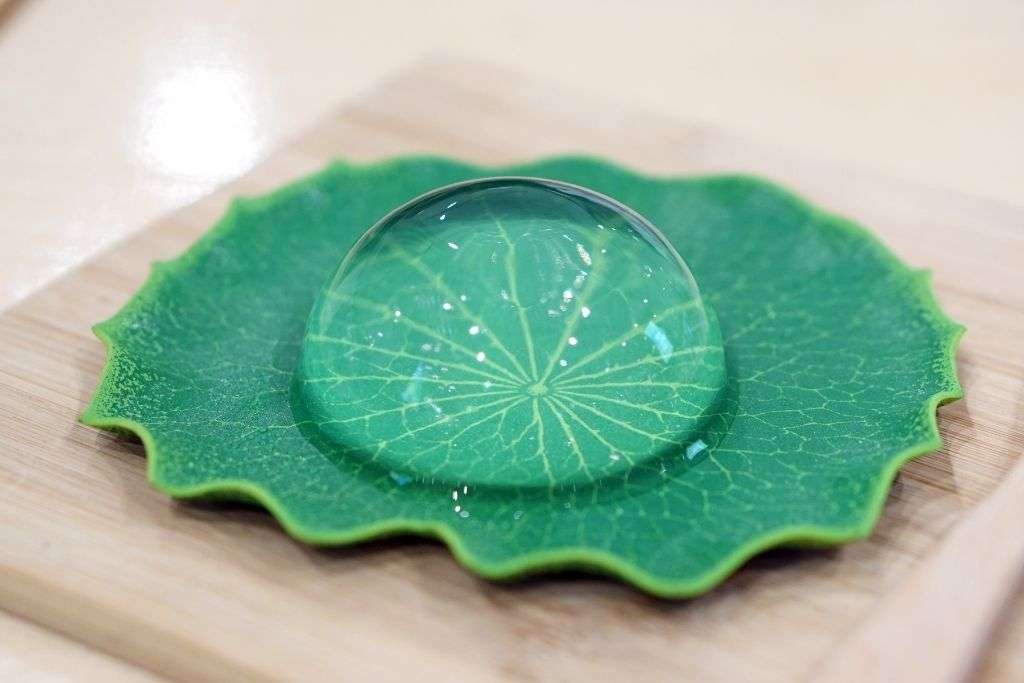
This unusual-looking confection is actually created with water (and often food coloring too) in order to give them their appearance.
However… while they might look like delicious little half sphere-shaped desserts – what many people don’t know about them is that this particular dish was actually invented back in 1988 by a Japanese confectioner named Yasumasa Takagi who wanted to come up with an alternative way of presenting mizu Shingen mochi (a traditional dessert made out of rice cakes). Since he didn’t want to use gelatin, he eventually came up with the idea of using water instead.
Of course… it wasn’t until around 2013 when the dish started getting popularized outside Japan and became more widespread in other areas too.
I suppose, looking at it, it makes sense that it was called a raindorp cake – as it does look a bit like a drop of fallen rain. But still, a cool story.
Doughnuts (or Donuts)

The dough part makes sense, but the rest of the name is just nuts!
These delicious deep-fried treats were actually created back in 1847 by a man named Hanson Gregory who was an American sea captain.
After he had returned from his voyage to the Dutch East Indies, he started experimenting with different ways of frying up some dough that would then be filled with various other ingredients such as jam or cream fillings. This was his version of the Dutch “olykoeks” but was done in an attempt to cook something that wouldn’t spoil before making it back home.
What people don’t often don’t realize is that the “nut” portion of the name comes from the fact that it was shaped like a mechanical nut (think nuts and bolts). And thus, the modern ‘doughnut’ was born! Why Gregory punched the hole in the middle of the pastry we may never know, but aren’t you glad he did?
Of course… these days you can get so many variations on this original recipe for baked goods both here in North America as well as around the world. While they may not always include things like fruit jams (or even use specifically designed dough) there are still a lot of great flavors and tastes to be tried.
Beef Wellington

Anyone who has watched Hell’s Kitchen knows that this is a staple on that particular dinner menu. But who first decided to coat a filet of meat with some pate and chopped mushrooms and then cover it all with puff pastry?
Well… according to some sources it was actually created by the French chef Marie-Antoine Carême (one of Escoffier’s mentors) back in 1815.
It all started when King George IV paid a visit to Napolean Bonaparte who had set himself up at his home on St. Helena after his exile from France and well before Napoleon took over as Emperor of France again. Since there wasn’t any proper food available right away, the chefs were left scrambling for ingredients they could use to make something special! Although this sounds like an interesting origin story, it doesn’t quite explain the name.
The most popular opinion is that this was named after Arthur Wellesley, the Duke of Wellington, in part to recognize his leadership in the famous Battle of Waterloo. After all, if you are able to defeat Napoleon Bonaparte, the least they can do is name a dish after you.
But there are some who insist that this dish was created by the good folks in Wellington, New Zealand.
Oysters Rockefeller

Another popular dish that is often seen on the Hell’s Kitchen menu – but what does Rockefeller have to do with these slimy little sea creatures?
Many people assume that the dish is named after the very wealthy John D. Rockefeller, likely because he commissioned them for some kind of lavish dinner part or event. This is only partially correct, in an odd and disconnected way.
This dish was actually first created back in 1899 by Jules Alciatore who opened up a restaurant called Antoine’s and wanted to come up with an appropriate way of presenting this particular type of seafood.
After hearing about all about John D. Rockefeller, who was known at the time as one of America’s wealthiest men, he decided to name the decadent dish after the tycoon without his permission or knowledge. In fact, it is widely believed that Rockefeller never actually tasted the dish that was named after him.
One thing’s for sure… if you’re going to try Oysters Rockefeller at least once, Antoine’s Restaurant in New Orleans is widely regarded as one of the best places to get a true, traditional taste.
Nachos
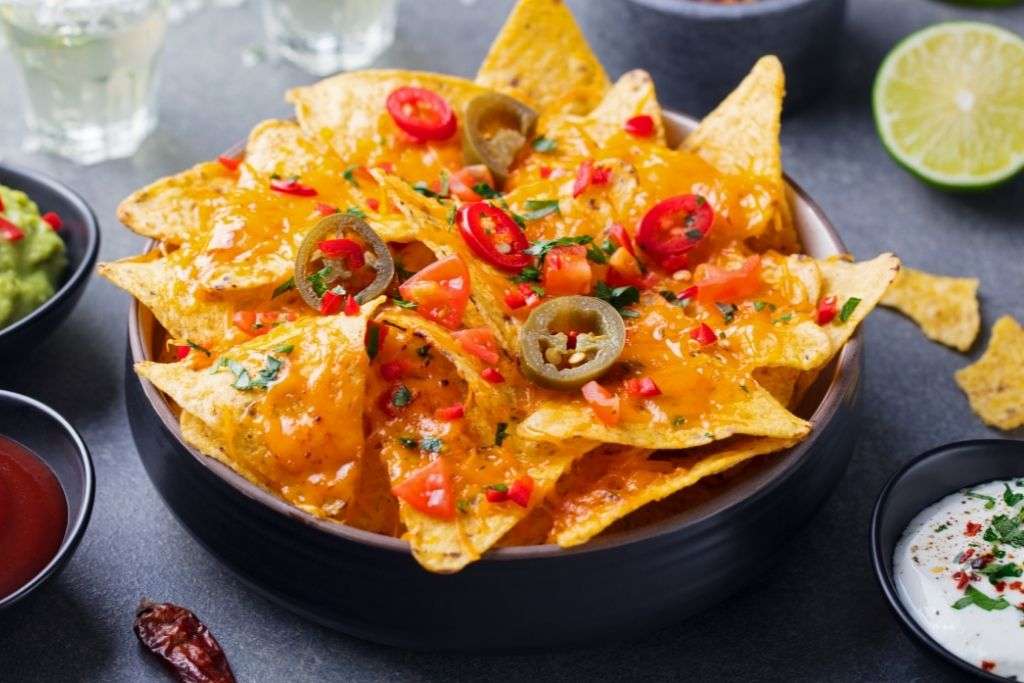
This dish has a really interesting history with many different variations on how it got its name. Although all of the stories seem to give credit for the dish to Ignacio Anaya, there are several variations on how the term “Nacho” came to be applied to this Mexican snack.
There are some people who insist that the name is derived from the Mexican slang word “nacho” which means small, young, and inexperienced person (think junior). The story goes that in 1943 Anaya took over as head chef at a restaurant called Piedras Negra near Eagle Pass, Texas when he was just 19 years old. He was given that nickname from the start purely because of his age.
Another variation tells of how Anaya was given the nickname as a direct result of some minor misdeeds. While taking care of a U.S Army base nearby, Anaya began serving them new creations. His superiors were so annoyed by the fact that he was changing the menu without their permission or knowledge, that they forced him to come up with a new title for himself. “Nacho” was the new name he chose and everyone loved it!
However Anaya got the nickname Nacho, the story of how it was applied to the dish seems commonplace.
One day, when the restaurants were all closed, Ignacio Anaya found himself faced with a group of hungry U.S Army officials and their wives. Not wanting to turn them away hungry, but also having limited supplies on hand, he used whatever food leftovers he could scrape together to create this unique dish.
The creation became an instant hit with all of those present and was added to the menu under his nickname. And that’s how “Nacho” created “Nachos”.
Side Note: What do you call cheese that isn’t yours? Nacho Cheese!
(Dad Joke for the Win!!)
Sloppy Joes
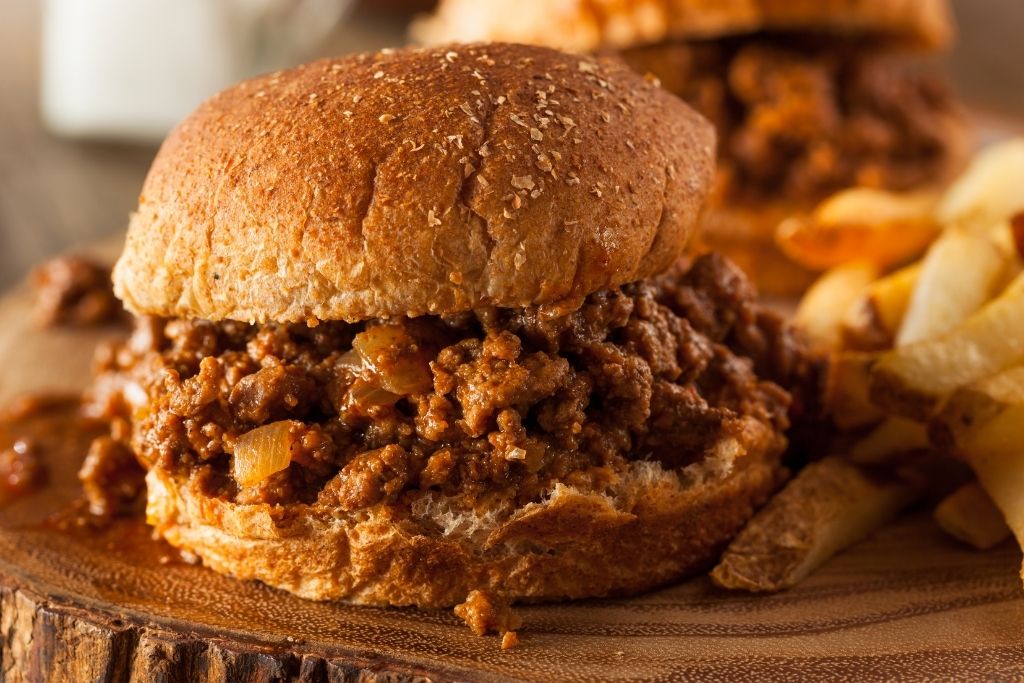
This dish is another one that seems to have a rather silly name and most people would wonder how in the world a Sloppy Joe came to exist. And, who – of course – is the infamous “Joe”??
According to some, the term “Sloppy Joe” has its roots back in 1933 with a Mexican restaurant located just outside of Pittsburgh, Pennsylvania by Chef Jose Guzman who was known for his quick wit and sense of humor.
One day he found himself faced with some unexpected patrons at lunchtime when there were no more prepared dishes on hand. With very little food available, he had to improvise quickly… which meant taking what few items they did have including ground beef, and creating something new. To make it easier on everyone involved, Guzman simply referred to this creation as a “Sloppy Joe” and it became one of the most popular items on his menu.
I can see how Jose could become “Joe” for the sake of a sandwich.
Another story gives credit for the loose meat sandwich to a chef who was actually named Joe in Sioux City, Iowa. Others give credit to Sloppy Joe’s bar in Key West, Florida.
Although both of the latter two have a much more direct connection to the name “Sloppy Joe” the details of the Jose Guzman origin story sound like the most fun!
Wherever it came from, the term was eventually picked up by other locations in Pennsylvania and eventually across the United States, where Sloppy Joes remain to be an extremely popular staple food item today.
Ice Cream Sundae

As with many dishes that we take for granted, this particular dish seems like such a necessity at times… but how did it get its name?
There are several stories attached to the origins of ice cream sundaes, and several places that claim to be the birthplace of the Ice Cream Sundae. However, there are two that seem to specifically call out how the odd spelling of “Sundaes” came to be.
In one story, a Plainfield, Illinois inventor named Sonntag created the delicious treat and named it after himself. Since the name Sonntag means “Sunday” in German, the dish’s name slowly migrated from Sonntag to Sunday to Sundae.
Another gives credit to Evanston, Illinois as the home of the Ice Cream Sundae. After a law was passed prohibiting the sale of ice cream sodas in 1890, local shoppers started serving ice cream without the soda, but – instead – with the patron’s choice of syrup. These treats were only initially available on Sundays, so they became known as Ice Cream Sundays. However, some Methodist leaders did not want the sweet treat’s name to be associated with the Sabbath, so the spelling was changed to Sundae.
Although I do believe that the dish itself most likely originated in Two Rivers, Wisconsin, I give more credence to the name having come from Evanston, Illinois. But that’s just my opinion.
Beef Stroganoff
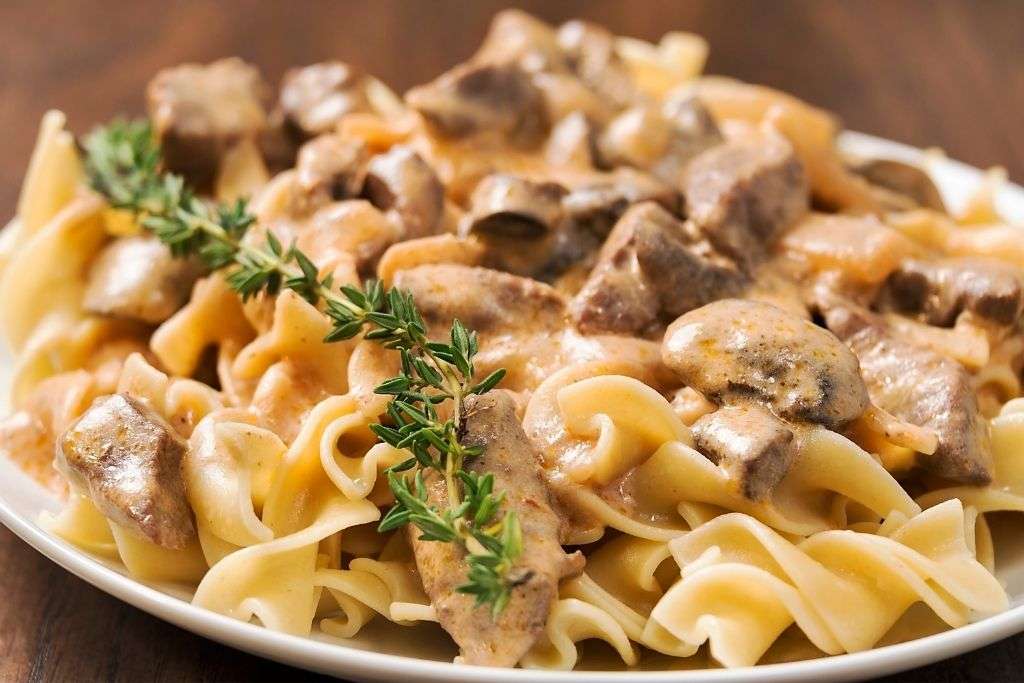
This dish is another one that seems like it would make sense to have a rather explanatory name, but – as with many others on this list- the explanation doesn’t seem quite so clear.
According to some accounts, Beef Stroganoff was named after Count Pavel Stroganov (also spelled by som as “Stroganoff”) who lived in Russia during the late 1700s and early 1800s. Some claim that he created the recipe for beef stroganoff while others say that his personal chef – most often French chefs – did so in order to add some Russian flair to otherwise typical French recipes.
In the cookbook A Taste of Russia, it is said that Count Stroganov’s chef simply added some very Russian sour cream to a basic French mustard sauce’ and poured it over beef. And that’s how this classic dish was born and named.
The Reuben Sandwich

This particular dish is a clear favorite of mine. However, how it got its name is a little less clear!
The first story comes from Omaha’s Blackstone Hotel who claims that their chef created it during the mid-1920s. The story goes that chef Bernard Schimmel created the snack for one of their guests, a poker player named Reuben Kulakofsky.
While another version credits Arnold Rueben himself with creating the sandwich at Reuben’s Delicatessen in New York City. According to this story, Rueben noticed an increase in corned beef sales due to the popularity of other deli sandwiches using it as a main ingredient – so he added his own spin by throwing together sliced corned beef with sauerkraut and dressing on rye bread.
Still another story, albeit still with its roots at Reuben’s Delicatessen, gives credit to Alfred Scheuing, a chef at Reuben’s Delicatessen. Some say he was the one, not Arnold himself, who created the sandwich.
Sandwiches

Speaking of Sandwiches, did you know that the sandwich is actually a relatively new term?
This hand-held meal is named after John Montagu, 4th Earl of Sandwich, an eighteenth-century English aristocrat. He was a bit of a gambling fanatic and didn’t want to leave the table, so he ordered his servants to bring him slices of cooked meat between two pieces of bread.
This allowed him to continue playing cards without ever having to take time out for dinner! And because this new type of meal – called sandwiches- contained everything that Earl Sandwich liked, it became known as a sandwich.
Although many will argue that John Montagu did not – in fact – invent the “sandwich”, as it is believed that people ate meat between slices of bread long before then, it is widely accepted that he is the source for the name.
Caesar Salad

Unlike the other dishes on this list, Caesar Salad has a pretty clear and uncontested explanation for its name.
According to various accounts, including those of his grandson and others who knew him well – it was Tijuana Restauranteur Caesar Cardini (not Julius Caesar, as some might believe) who created this now-famous salad! Like so many of our other food invention stories, Cardini Caesar’s salad came out of necessity when the restaurant was low on supplies. In order to feed his guests, he cobbled together this new appetizer with what he had on hand.
The original recipe called for Romaine Lettuce, croutons made from garlic-flavored fried bread cubes (similar to Italian crostini), Parmesan cheese, coddled eggs, and Worcestershire sauce with olive oil and lemon juice whisked together as the dressing. It is said that he even put some small pieces of anchovy fillet into each serving!
Salisbury Steak
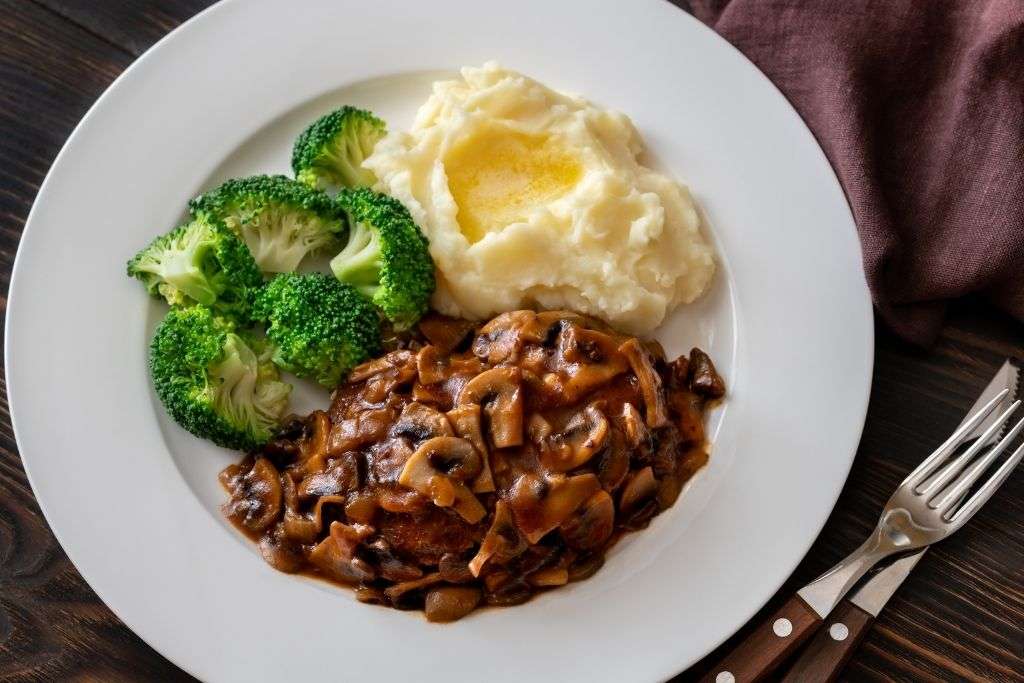
One of the most unappetizing origin stories on our list, Salisbury Steak has a less than appealing start.
The American Civil War was raging, and It became clear that food shortages might be a problem. As a physician and early dietician, Salisbury believed that diarrhea suffered by the Union troops could be controlled with a diet of coffee, lean chopped beefsteak, and limiting the number of fruits, vegetables, starches, and fats to one-third of the soldier’s diet.
Salisbury came up with his beef patty; made of ground beef combined with onion, salt, pepper, and other spices – then baked until it formed into patties or balls which soldiers would then fry on mess kits over open flames before eating them alongside mashed potatoes (or whatever they could find). This dish later went on to become known as “Salisbury Steaks” after its creator’s name.
Baked Alaska

Although you might think the name of this difficult-to-execute dish is based on the snowy peaks of its meringue, the name actually has a far more tongue-in-cheek history.
Baked Alaska is a dessert dish made of a meringue shell filled with ice cream, which has been browned by the oven’s heat. It was invented at Delmonico’s Restaurant in New York City, based on the findings of 18th-century scientist Sir Benjamin Thompson regarding the insulator properties of egg whites – and it first appeared on their menu sometime between 1860 and 1870.
However, the name didn’t appear until 1867 when Charles Ranhofer used “Alaska” as a reference to a visit by the USS Alaska which had taken place three years earlier (1864). This Russian ship arrived during winter and ran aground near Sitka – so it became known as the ‘iceberg’ that came from Siberia.
Others believe that the name was coined as a play on the acquisition of Alaska by the otherwise warmer climates of the United States as was originally called “Alaska, Florida”. But, instead, the Baked Alaska name caught on. Shortly thereafter, several bakeries began selling pound cakes topped with ice cream, fruit preserves, nuts, and meringue under this now-famous moniker!
Carpaccio
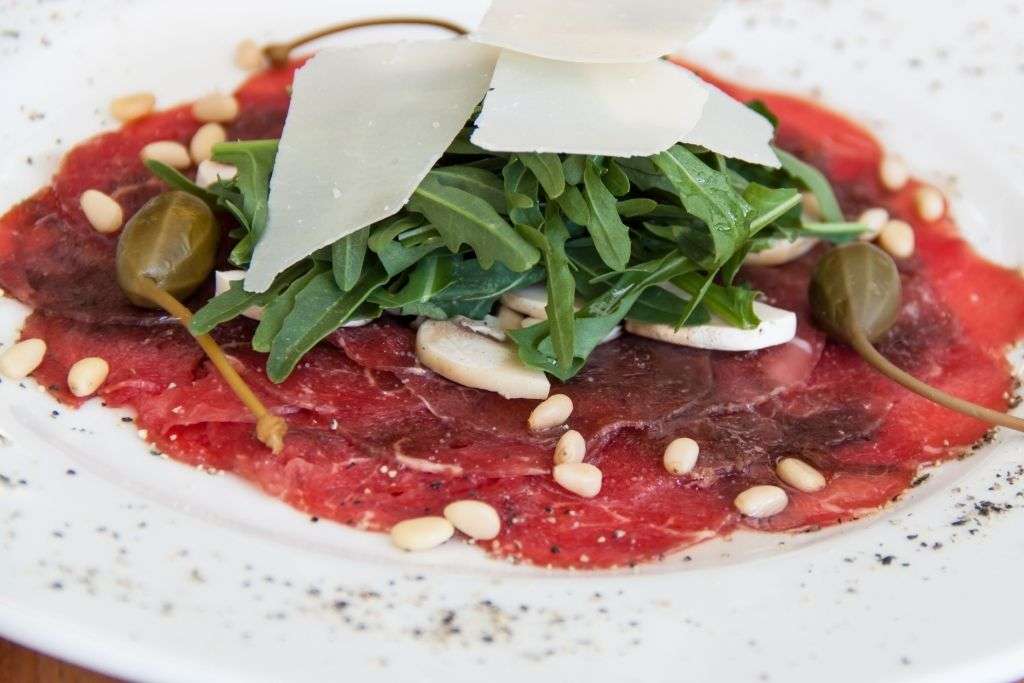
Carpaccio is a dish made of finely-shaved slices of raw beef, usually served as an appetizer. Unlike many of the other dishes, the name comes not from the inventory nor the town, but from the color of the dish.
The name comes from Venetian Renaissance painter Vittore Carpaccio, who was known for using vibrant red hues in his work, including his most famous painting – “The Courtesans.”
Which features the main female character dressed in red (and later green), with her plumed fan shown prominently at the right side of the table; suggesting that she herself might have prepared this dish for her guests! Which would explain why it’s typically seen on upscale menus around Italy and elsewhere where you can find it today.
Peach Melba
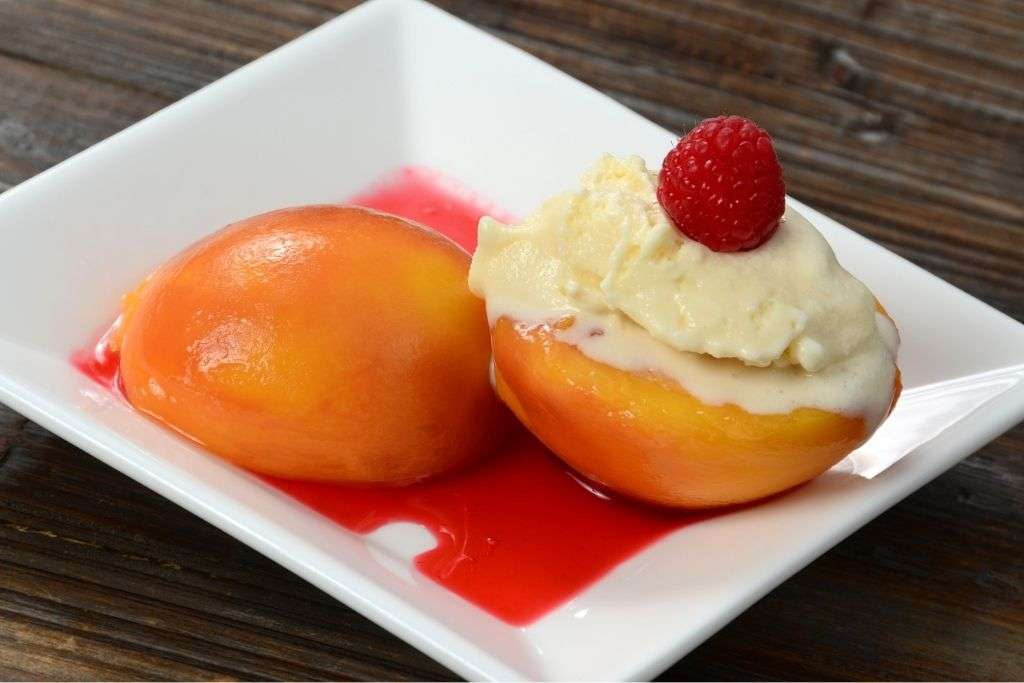
Sometimes known as Peach Royale, this delightful dish features peaches poached in vanilla syrup – then topped with raspberry sauce and either whipped cream or ice cream.
The name comes from the French opera singer (and foodie) Nellie Melba who was served it while staying at The Savoy Hotel in London; where she also had her own suite of rooms! Because of her love for the desert, it’s been named after her ever since. In fact, even when you order Peach Melba today – there is a chance that they will play one of Melba’s songs during your meal. She has inspired many other dishes including desserts such as peach melbas, piña coladas, and baked Alaska itself!
Shrimp Scampi
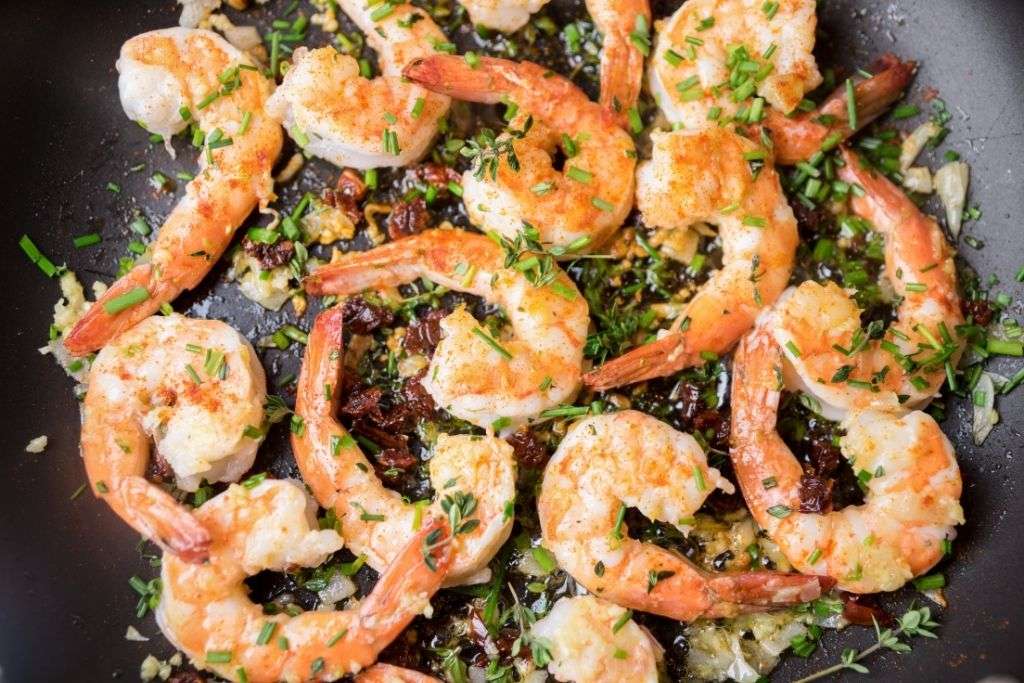
Although shrimp scampi is a relatively modern dish, it did not get its name from the Italian city of Scampa – but rather because the keys to making this simple yet delicious meal are simplicity itself.
Scampo means “to escape” or “to slip away.” This makes sense considering you can have dinner on the table in minutes without much fuss! And since it’s so easy, many other versions have sprung up including chicken and veal scallopini which share similar flavors while being made with different proteins.
Chicken à la King

One of the most popular dishes found on menus across America during the mid-20th century was Chicken à la king; an entrée consisting of diced chicken breasts combined with a sauce of mushrooms and either pimientos or green peppers – served on a bed of puff pastry with rice.
This dish gets its name from one Harry Gordon Selfridge, the founder of London’s department store called Selfridges (now known as just ‘Selfridges’). He offered it to King Edward VII when he was staying at his hotel in 1908; however, what transpired next is not clear. Some say that they sampled this new delicacy together while other reports suggest that the king requested it be sent back for him to try later! Either way, once word got out about how delicious chicken à la king was…the rest is history! It quickly became an American favorite across restaurants nationwide thanks to dishes like this being easy-to-make, quick to serve, and pleasing to the palate.
Pound Cake

I always thought this cake got its name because of the density of the cake, but that is not – in fact – the case.
Another simple yet delicious dessert that you can easily make at home or order from your local bakery is pound cake. It typically consists of a mixture of flour, butter, sugar, and eggs – with vanilla flavoring added for good measure!
This sweet treat was originally known as a ‘pound cake’ because it contains one pound each of all the ingredients mentioned above (hence its name).
But, what’s interesting is how this recipe took off to become popular across America during the nineteenth century when immigrants brought their traditional recipes here. And although you will see many variations on the classic old-fashioned version today…the signature moist texture remains the same.
Graham Crackers

The story of how these sweet and crunchy treats first came to be can be traced back to a Presbyterian minister named Sylvester Graham. But there is a debate about the actual origins of these crackers.
Some say that Graham became concerned about poor health among Americans – who were largely subsisting on meat and potatoes with very little in terms of vegetables or fruit. He wanted people to eat more whole grains such as rye, oats, and wheat, so he created a whole wheat flour called “Graham flour” that could be used to make heavy biscuits.
Others say that it was Graham’s attempt to fight against the industrial revolution, and that created this mixture to be more wholesome and pure, forcing his flock to return to simpler, less flavorful times.
As time went by…people all over America began using this kind of baked good as an easy way to make something nutritious that would keep well. But, over time, it morphed into the base for decadent treats such as s’mores and cheesecakes.
So whichever Sylvester Graham set out to make, Graham Crakers ended up in the complete opposite direction.
Pizza Margherita
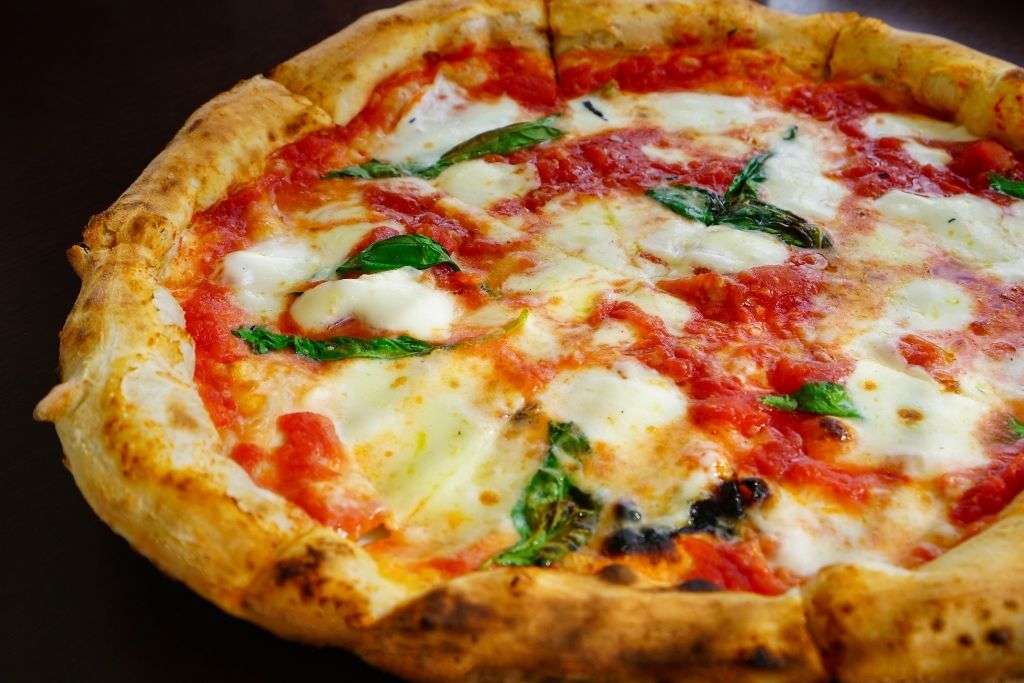
One of the most popular pizza toppings around the world is definitely mozzarella cheese – and in Italy, it’s always found on top of a classic pie called ‘Pizza Margherita.’
This delicious dish gets its name from Queen Margherita di Savoia who was visiting Naples back in 1889 when she fell in love with this simple yet comforting food. Since then, Pizza Margherita has become so beloved by Italians that you can even find restaurants serving their own version throughout much of southern Italian where they make them fresh to order! And since every region makes them slightly different…it’s hard not to fall head over heels for each one.
Lobster Newburg
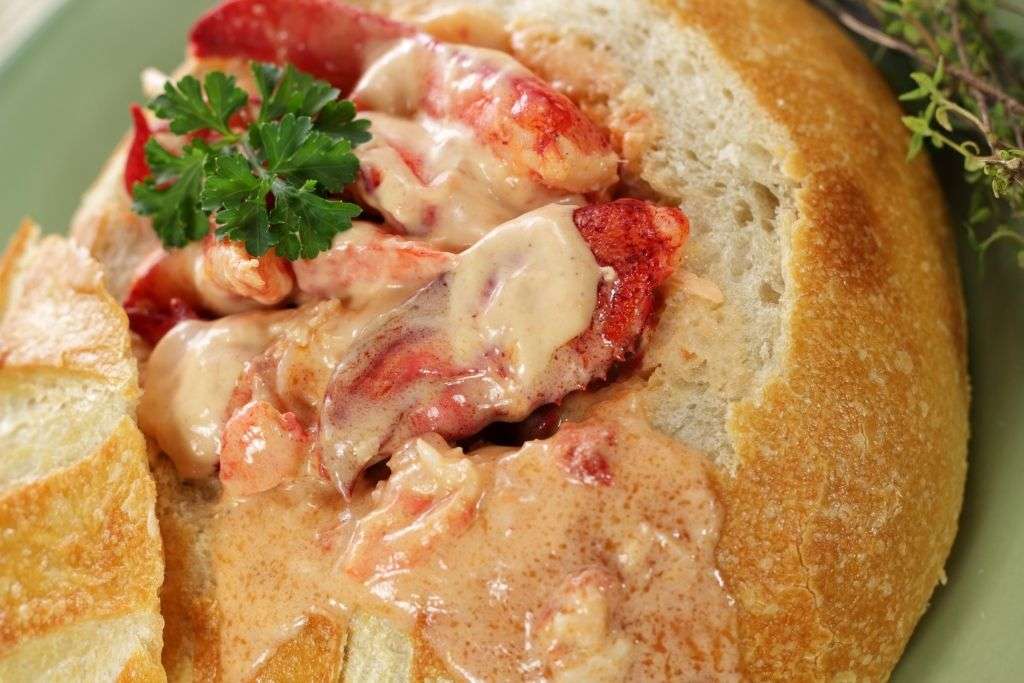
Another food that was named after someone, but with a twist!
One of the most luxurious seafood dishes that you can enjoy today is Lobster Newberg. This dish consists of chunks of fresh lobster meat in a sauce made with sherry, butter, and spices – all topped off with more yummy grated cheese!
Although it sounds like an indulgent meal fit only for royalty…it was actually created by a sea captain named Ben Wenberg. He shared the recipe with his good friend and manager of Delmonico’s restaurant, Charles Delmonico. After some adjustments were made by chef Charles Ranhofer, the item was added to the restaurant’s menu as Lobster à la Wenberg, in honor of the original creator.
However, following an argument between Wenberg and Delmonico, the dish was unceremoniously removed from the menu. This caused some distress among patrons, who had grown fond of the dish, so it later returned to the menu using the anagram “Newberg”.
Some will also argue that this dish is just a French sauce with some lobster in it, but it has become a classic all on its own.
Kaiser Rolls
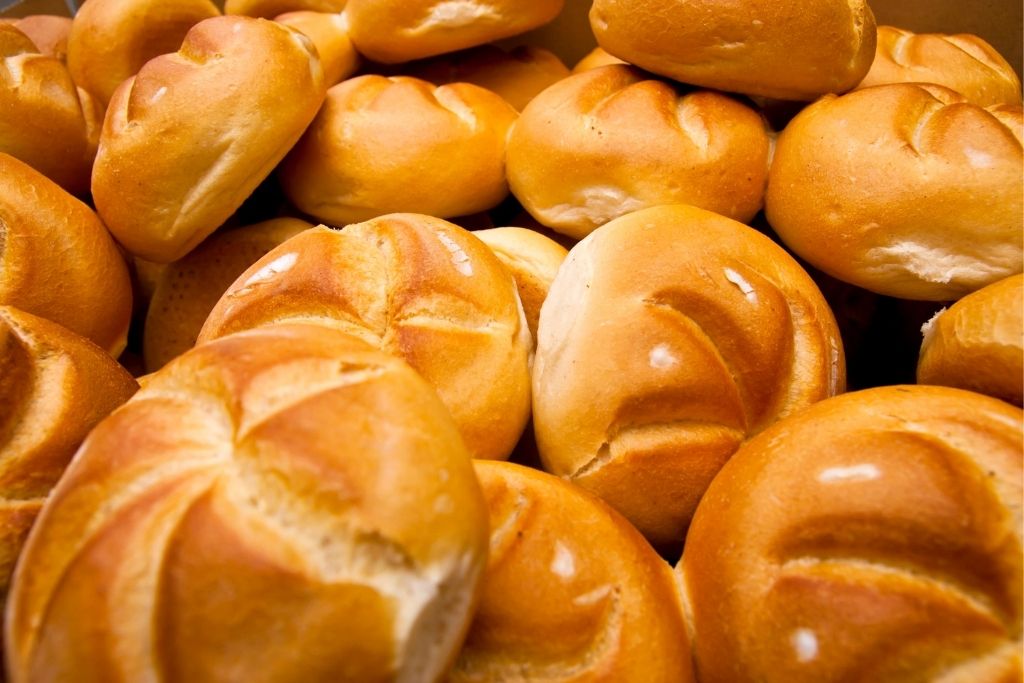
Another popular type of bread found in many bakeries and restaurants is the Kaiser roll.
These are typically served at delis or paired with soups, but they can also be made into mini sliders for a fun appetizer! A kaiser roll usually has its top side divided in a symmetrical pattern by curved cuts radiating from the center to resemble a crown.
And although this might not seem that important…it actually played an integral role in how these buns came to be known as such today.
They are believed to have been named to honor Emperor (Kaiser) Franz Joseph I, who deregulate the price of bread at the urging of local bakers. In return, they named the popular bread after him.
Chop Suey

Although most assume that this dish is commonly eaten in many countries across Asia, chop suey is mostly an American invention.
Consisting of bite-sized pieces of meat and vegetables – usually served with rice – it is thought to have been first created by Chinese immigrants back during the 19th century. In an effort to make use of less desirable cuts of meats (like steak) or food scraps, this dish can be made from a variety of leftover meats and vegetables.
But how did this whole mishmash kind of meal come to be called ‘chop suey’? Some will argue that it comes from the Hokkien dialect which refers to any type of chopped-up bits as “tsap seui”, which roughly translates to “assorted pieces”.
Whatever the case, it has definitely stuck as one of America’s favorite Chinese dishes.
German Chocolate Cake
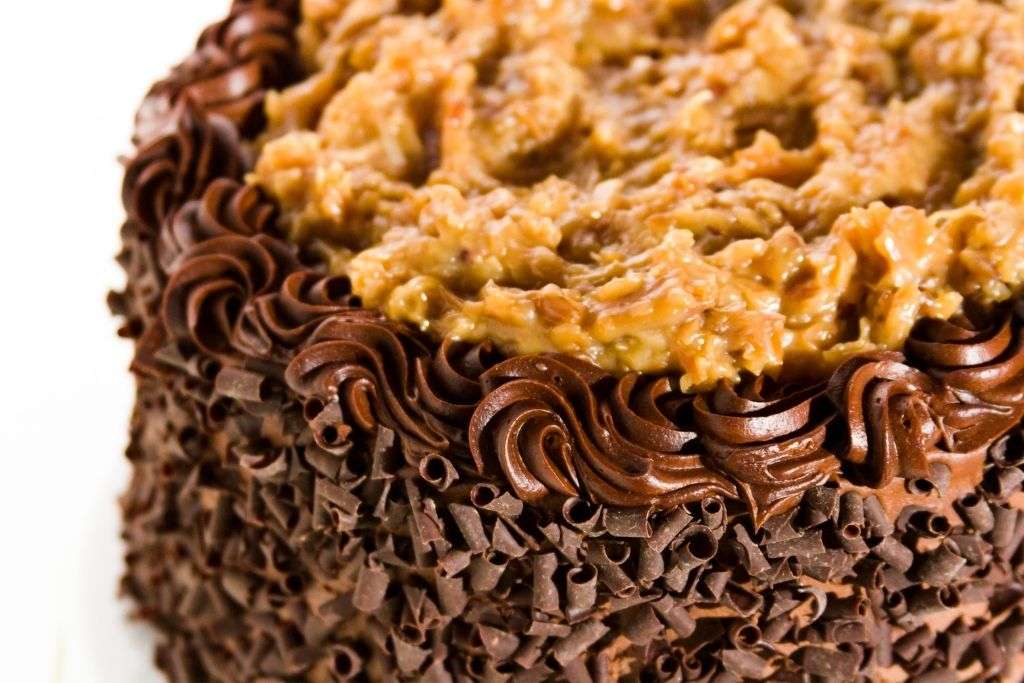
There are few desserts quite as delicious and decadent as a German chocolate cake.
But, despite what you might think, the name does not come from the place, but – instead – from the person. And not even the person who invented the cake, it came from the person who invented the chocolate.
This cake recipe is an American invention, using chocolate created for Baker’s chocolate company by a man named Sam German.
Over a century later, a Texas homemaker decided to use Sam German’s chocolate in a cake recipe which she sent in for publication at a local newspaper under “German’s Chocolate Cake”. At some point, German’s became German and the rest is history!
General Tso’s Chicken

This dish is so popular in the United States that it’s often called a staple of American-Chinese food. However, like most of the Chinese Food dishes on this list, you aren’t like to find General Tso’s chicken on any restaurant menu in China.
And while this particular recipe was created by a man named Peng Chang-kuei…General Tso, for whom the dish would be named after, actually never got to try his own namesake meal! In fact, the General in question died many decades before the dish was created.
In an even stranger twist, the now infamous General Tso wasn’t even from China – he was born and raised in Taiwan during its occupation under Japan at the time. He eventually moved to mainland China where he became known as “Zhào Jièchén” or “Zhao Ziyang”.
Although there are many variations on how exactly this chicken came about – most believe that Chef Peng simply took inspiration from General Tso’s style of cooking to create this tangy dish.
Mississippi Mud Pie

Although the Mississippi part isn’t that far of a stretch, after all, it is believed that this decadent dessert originated in that state. But who would use the word “Mud” in the name of a sweet treat?
The trick is in the visual appearance of the dark, rich, chocolatey pie – which some say resembles the muddy banks of the Mississippi River.
The monicker of Mississippi Mud Pie is attributed in a large part to Jenny Meyer, a waitress from Vicksburg, Mississippi who remarked that the pie reminded her of Mississippi mud after the great flood of 1927.
Somehow, the muddy name stuck!
Food names that will go down in history!
And there you have it, our collection of unique food with unique names and how they both came to be.
Did I miss a food with an unusual name that you’d like to learn more about? Let me know in the comments below and I will try to research its history and add it to this list!

